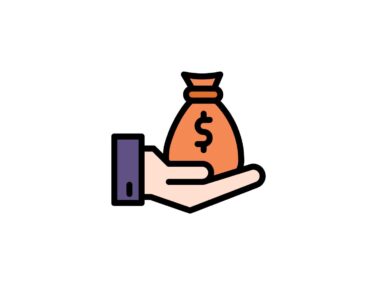When even a single error can sabotage all the effort your team has put in, you know it’s a task you should handle very carefully.
Well, we don’t mean to scare off any beginners here but SEO can sometimes prove to be quite a delicate affair! Hey, we see our SEO team struggle everyday so we know it ain’t easy!
So, to help out the new legion of beginners out there, and to remind everyone else of the basics, we reached out to our community of SEO experts and business leaders to share with us some beginners’ mistakes they know of, and probably committed themselves!
Read on!
Getting Character Limits Wrong
One common beginner SEO mistake is misunderstanding meta title character limits.
You will often see junior SEOs sticking to a strict limit like it’s a gospel truth.
The supposed wisdom is that you shouldn’t go over about 55-60 characters, but all this really does is put a limit on the optimisations you can make.
And don’t even get me started on meta-description character limits.
The second mistake that comes to mind is getting too caught up in grand theories and big concepts rather than focusing on the nuts and bolts which move the needle.
If you spend all your time preaching about EEAT, Topical Relevance, NLP, Information Gain Rate, TikTok SEO or whatever else is the latest hot topic and not paying attention to simple content optimisations and links, then you’re wasting your time.
Compromising on Content Quality
One common mistake I usually see business owners and founders make is forgetting about content quality.
At WRIXON, I often come across articles that have been perfectly optimized for SEO but that seem to forget a human is supposed to read them.
They contain all the right keywords and they follow all the SEO best practices, but they’re practically unreadable. The content feels robotic, there’s no “flow,” and there’s nothing of value to be found anywhere.
Findability is important, but not at the expense of readability.
In other words, yes—go ahead and optimize for search engines. But don’t forget to speak to real pain points your readers have and provide clear solutions to those pains.

Aaron Wrixon
Founder, WRIXON
Failing to Optimize Images
One common beginner’s mistake that I’ve observed is the failure to optimize images properly. This can lead to slow page loading times, which can negatively impact user experience and search engine rankings.
To correct this mistake, I recommend that website owners ensure that all images are compressed and optimized for web use. This can be done using tools like TinyPNG or ImageOptim.
Additionally, make sure to include descriptive alt tags and file names that include target keywords.
By taking these simple steps, website owners can improve their website’s load time, user experience, and ultimately, their search engine rankings.

Andy Golpys
Founder, MadeByShape
Improper Use of Heading Tags
Not using heading tags properly!
It’s not always their fault though. Many website builders don’t tell you the proper way to use heading tags and many think the numbers 1-6 are just for show, like they would in MS Word or a Google Doc.
However, these heading numbers matter and directly affect how your web page is viewed both by search algorithms and users, especially users with accessibility needs.

Chad Lewine
Founder, ChadWorks
Ignoring the Importance of Search Intent
One of the most common SEO mistakes I’ve seen beginners make is neglecting the importance of search intent.
Often, new SEO practitioners will target keywords based purely on search volume, ignoring the underlying intent behind the search. This can result in content that doesn’t satisfy what users are looking for, which, in turn, hurts rankings.
To correct this, focus on understanding the user’s intent, whether informational, transactional or navigational.
Instead of just targeting high-volume keywords, match your content to the specific needs of the searcher. This means crafting detailed, relevant content that answers their questions or solves their problems, rather than just writing for the sake of SEO.
Failing to Optimize Images
Uploading large, uncompressed images is a common mistake that can significantly slow down a website, hurting both user experience and SEO rankings.
I believe Google favors fast-loading sites, so heavy files can push your page down in search results. To address this, compress images before uploading using tools like TinyPNG or Squoosh, and choose the right formats, JPEG for photos and PNG for transparent graphics.
Heavy Image = Low Page Speed = SEO Down
Switching from static images to embedded tables is another smart SEO move. Embedded tables are SEO-friendly because search engines can index the content, unlike text locked inside images.

Bhavik Sarkhedi
Founder, Ohh My Brand
Neglecting Structure and Linking
A common beginner mistake I see in SEO is neglecting proper site structure and internal linking.
When websites lack a clear, logical structure or have broken or missing internal links, it becomes difficult for search engines to crawl and index content effectively. This can lead to lower rankings and missed opportunities.
To correct this, ensure your site has a well-defined hierarchy with clear categories, and use internal links to connect related content. Regularly check for and fix broken links.
A solid site structure improves user experience, boosts crawl efficiency, and ultimately enhances SEO performance.

Alan Noblitt
President, Seascape Capital, LLC
A Set and Forget Formula
A rookie mistake is to assume that SEO is a one-time activity/set it and forget it.
Search engines are constantly updating their algorithms/keywords/evolving so SEO needs to be an ongoing commitment for content to stay on top/page 1.
Don’t make a lot of small SEO changes to your site. Although it’s smart to update your site with fresh content you have to be careful it doesn’t look suspicious/get penalized by the search engines.
If you discontinue a product/service do not delete the page from your site. Once the page is deleted both the URL and the keyword for which it was ranked will disappear, simply add a message for visitors to your site to redirect them to the relevant page.

Paige Arnof-Fenn
Founder & CEO, Mavens & Moguls
A Single Service Page
A beginner mistake I see often with SEO is not separating your services into separate pages.
When companies or consultants create a website for the first time, they often list all of their services on one page, and they only share 100 or so words about each of their offerings.
This means that one page needs to try to rank for four or five different keywords, and sends mixed signals to Google about what that page is about.
If they break their services out into individual pages focused on one service (ideally one that there is decent search traffic around), that gives them more opportunities to optimize each page.
If they have five services, instead of having one page with only one H1, one meta description, one URL, etc., now they have five URLs and five H1s, and they can optimize each one.
The BoostMyDomain team thanks these experts and leaders for taking the time to share these beginners’ mistakes that could prove costly even in an otherwise robust SEO strategy.
BoostMyDomain invites you to share your insights and contribute to our authoritative publication. Reach a wider audience, build your credibility, and establish yourself as a thought leader in an industry that caters to every business with an online presence!







